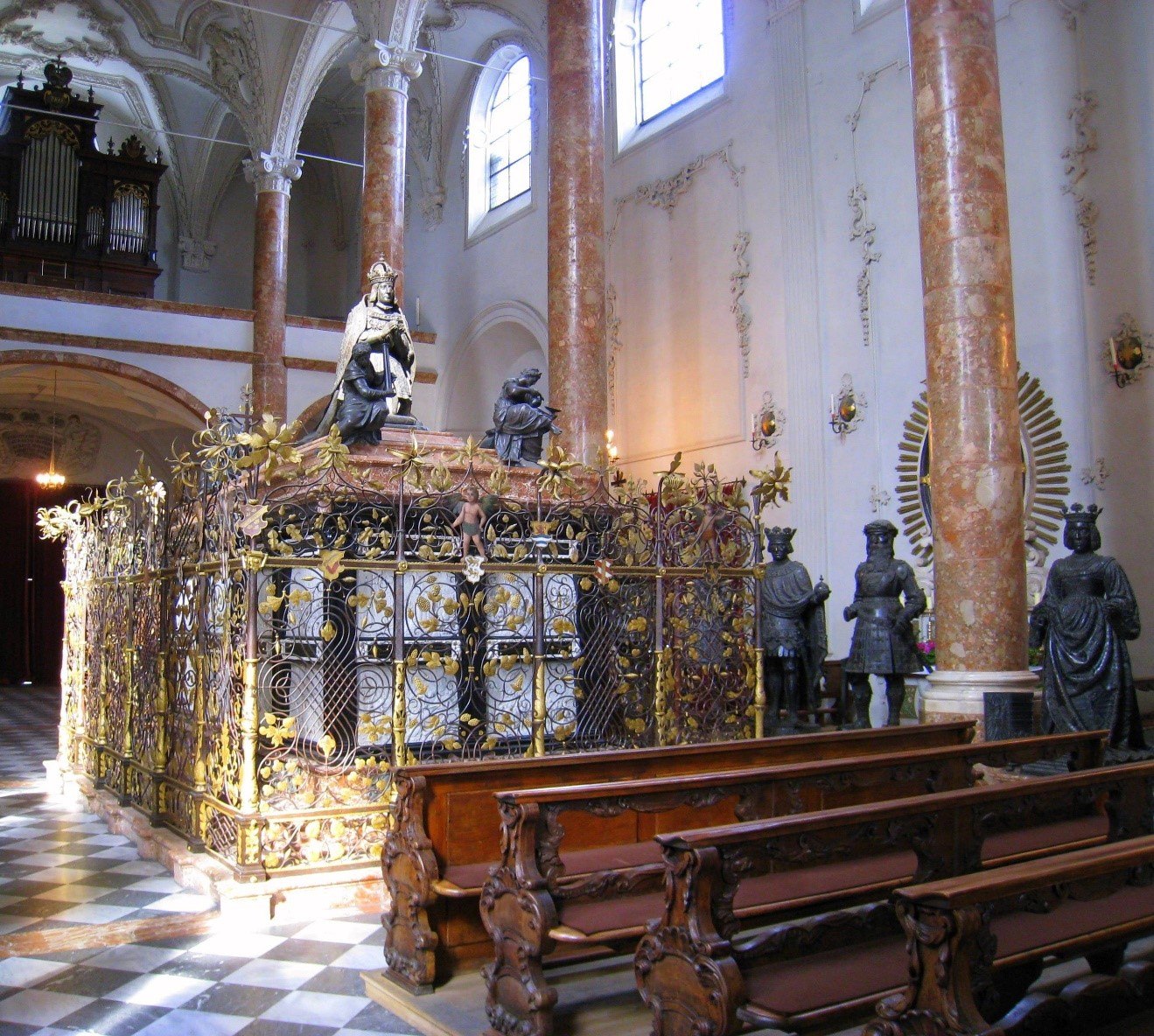Maximilian I’s sense of self-presentation
„Wer ime in seinem leben kain gedachtnus macht, der hat nach seinem tod kain gedächtnus und desselben menschen wird mit dem glockendon vergessen.“
(Whoever does not set up a monument to himself during his life enjoys no memory after his death. Such a man is forgotten as soon as the bell ceases to toll.”)
— Maximilian I, Weißkunig
Emperor Maximilian I understood the power of the arts to promote his image and perpetuate his name. The keyword of his cultural programme was “Gedechtnus”, which may be translated as memory, memorialization or even fame. Maximilian carried out this programme in several ways, to spread his own fame and ensure that he would be remembered in future ages as an outstanding scion of an outstanding family, notable for his power, wealth, political skill and artistic sensitivity. He used portraiture, both during his life and even afterwards. He used performances of music, such as Isaac’s motet Virgo prudentissima, whose text by Georg Slatkonia includes a prayer for the House of Habsburg. He also used liturgical foundations for himself and other members of his family and court. Maximilian was also quick to realize the potential of print in his programme, whether through the production of the chivalric epic » Theuerdank, or through print graphics such as the monumental Triumphzug and Ehrenpforte. Closely involved in the conception and realization of these projects were artists of all kinds attached to the court. Maximilian also used sculpture, notably in his cenotaph in the court church in Innsbruck. The centrepiece of this tomb, first planned in 1502, is an effigy of Maximilian in prayer, mounted upon a sarcophagus and surrounded by twenty-eight figures of his ancestors and role-models, as well as the busts of twenty Roman emperors (» Abb. Cenotaph of Maximilian I). Maximilian was closely involved in the execution of the project over the next seventeen years, although the monument was still unfinished at his death in January 1519, and had to be completed by his heirs. However, the cenotaph stands as lasting witness to Maximilian’s concern for self-presentation and self-memorialization, that is, for his “Gedechtnus”.
[1] Innsbruck, Tiroler Landesarchiv, Hs 208/1, fol. 86v. All English translations in the present article are by Grantley McDonald.
[2] Modena, Archivio di Stato, Carteggio Principi Esteri 1623, b.2/3,2,11, 1r; cf. Ludwig Fökövi, “Musik und musikalische Verhältnisse am Hofe von Matthias Corvinus”, in: Kirchenmusikalisches Jahrbuch 1900, 1 ff.; Moser 1929, 18 and n. 40, 173-174.
[3] Modena, Archivio di Stato, CPE Minute b.1644/1,2,9, 1r; cf. Moser 1929, 173-174.
[4] McDonald 2014, 20-21; cf. Moser 1929, 37, 40-41.
[5] McDonald 2014, 26-27.
[6] We are grateful to Prof. Artur Rosenauer, University of Vienna, for this information (Red.).
[7] McDonald 2014, 28-33; cf. Moser 1929, 28 and 183.
[8] St Gallen, Kantonsbibliothek, Vadianische Sammlung ms 30, nº 60; full text in Moser 1929, 37-38.
[9] St Gallen, Kantonsbibliothek, Vadianische Sammlung ms 30, nº 65; full text in Moser 1929, 38-39.
[10] St Gallen, Kantonsbibliothek, Vadianische Sammlung ms 30, nº 60.
[11] “… als zu eyner gezeugnuss, das mich dy Walchen, so doch subtyl synd, auch lobten, und von der musick, so mir got geben hat, auch hyelten”: Letter of 7 February 1518, St Gallen, Kantonsbibliothek, Vadianische Sammlung ms 30, nº 116; cf. Moser 1929, 40.
[12] McDonald 2014, 6-13; extracts in Moser 1929, 42-44.
[13] See » I. Odengesang.
[14] Modern edition: McDonald 2014.
[15] McDonald 2014, 2-41.
[16] McDonald 2014, 12: “Neque est quicquam (ut in summa referam) Principe magis dignum, quam si quibusque ingenuis artibus præstantes animos amet, foueat, tueatur. Datur enim ex hoc æternæ sibi memoriæ occasio. Hoc diuus Maximilianus, cum in alijs, tum in Paulo cognouit.”
[17] McDonald 2014, 34; cf. Moser 1929, 67.
